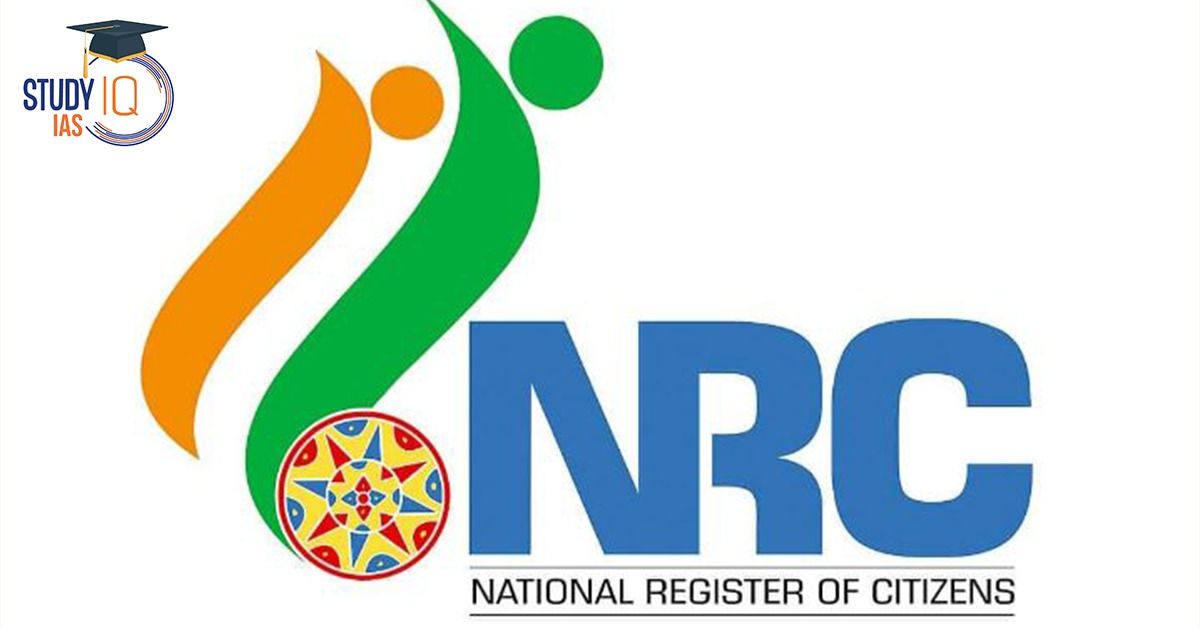Table of Contents
Context: The Ministry of Home Affairs has stated that no final decision has been taken yet on updating the National Population Register (NPR).
About National Register of Indian Citizens (NRIC)
The National Register of Indian Citizens (NRIC) is an official government-maintained registry that records the names and details of all Indian citizens, distinguishing them from non-citizens residing in the country.
| Distinction from NPR |
Note:
Fact
|
- The NRIC, mandated by the Citizenship Act 1955, was conceptualised after the 1951 Census and gained traction after the Kargil War (1999) based on recommendations by the Subrahmanyam Committee.
- This led to the inclusion of Section 14A was added to the Citizenship Act, which mandates:
- Compulsory registration of citizens.
- Issuance of identity cards to document citizenship status.
Objectives and Benefits of NRIC
- The primary aim of the NRIC is to enhance national security by maintaining a verified registry of citizens.
- Additional benefits include:
- Streamlining identity verification processes.
- Reducing instances of identity fraud and duplication.
- Enabling targeted welfare programs to ensure that benefits reach eligible recipients.
- The NPR serves as the foundational step in this process, differentiating between citizens and non-citizens through a multi-phase data collection strategy that includes both demographic and biometric information.
Process for Developing NRIC
The multi-phase process involves:
- Data Collection: Comprehensive demographic data was collected during the housing listing operations of the Census.
- Biometric data was collected to eliminate duplicates.
- Transparency Mechanisms: Public claims and objections are invited.
- The verification and appeals process ensures accuracy and allows residents to challenge records.
- Detailed Inquiries: Citizenship status inquiries finalise the National Register of Citizens (NRC).
- Final Step: Issuance of identity cards, as the Citizenship Act mandates.
Distinction Between Aadhaar and NRIC
A common question arises regarding the necessity of NRIC when Aadhaar exists. It is crucial to recognise that:
- Aadhaar is a unique identification number (12-digit) issued by the UIDAI to residents regardless of citizenship status, primarily for identity verification linked to services like banking and subsidies.
- The NRIC, on the other hand, focuses specifically on verifying citizenship status and requires proof of citizenship.
Thus, while Aadhaar serves all residents, NRIC is exclusive to citizens, playing complementary yet distinct roles in India’s governance framework.
Challenges and Concerns Faced by NRIC (National Register of Indian Citizens)
- Exclusion of Marginalized Communities: Vulnerable groups such as rural residents, economically weaker sections, and less-educated individuals may struggle to provide adequate documentation to prove citizenship.
- Women and transitory populations face additional challenges due to a lack of formal records, like birth certificates or land ownership documents.
- Eg., About 1.9 million people were excluded, many of whom were unable to meet documentation criteria despite being long-term residents.
- Humanitarian Concerns: Mass exclusions from the NRC could lead to significant social and economic displacement.
- Administrative and Logistical Challenges: The scale of verifying citizenship for over 1.4 billion people is a monumental task.
- Lack of Effective Communication: There are significant coordination issues among various government agencies involved in implementing the NRC.
- Poor communication can lead to errors and mismanagement, complicating the verification process and undermining public trust
- Data Privacy and Security: Concerns over the misuse or unauthorised sharing of sensitive demographic and biometric data persist.
- Exclusion from Electoral Processes: Individuals whose names are not included in the NRC would lose their constitutional right to vote.
Way Forward
- Simplified documentation procedures.
- Robust public awareness campaigns.
- Transparent and fair verification mechanisms.
- Strong data protection laws ensure privacy and security.


 150 Years of Vande Mataram: Celebrating ...
150 Years of Vande Mataram: Celebrating ...
 Global Financial Stability Report (GFSR)...
Global Financial Stability Report (GFSR)...
 Pilot Whales – Characteristics, Habita...
Pilot Whales – Characteristics, Habita...




















